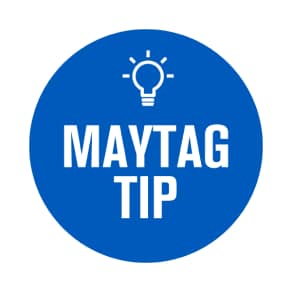
How to Use An Oven
Most people think knowing the right time and temperature for cooking is all you need. But understanding the best rack position as well as the differences between conventional and convection ovens will help you perfect your recipes. Learn the ins and outs of how to use an oven so you get consistent performance, meal after meal.
Cooking With An Oven: Step-by-Step
Cooking with an oven can be a seamless process provided you know the correct steps. You’ll begin by double-checking your oven type to make sure you know whether you’re baking conventionally or with convection.
After repositioning your racks, you will preheat your oven. When the oven finishes preheating, you will insert the food, allowing two inches of space around your cookware. Next, set the timer and leave the door to the oven shut as the food cooks. And when you're finished cooking, don't forget to keep the oven clean.
Step 1: Double Check Your Oven Type
Before you start cooking, know what you’re using — conventional or convection. This will determine time, temperature and rack position.

Conventional Ovens
In a conventional oven, the dish closest to an active heating element cooks the fastest because there is no circulating air throughout the oven. Conventional ovens are what many people traditionally grew up using and still have in their homes today.

Convection Ovens
While cooking at a lower temperature, fan cooking helps distribute temperatures more evenly on all racks than thermal-bake ovens. This also reduces cooking times and allows for a lower preheated temperature. Cooking by convection can circulate heated air for fast baking and roasting.

Converting Recipes for Convection
Convection ovens can help improve the bake times of many dishes thanks to their even heating design. Typically, to adjust your recipe for baking in a convection oven, reduce the temperature by 25°F and when roasting, reduce the overall cook time by 20%. Or check your oven for a setting that does it for you, like Auto Convect Conversion by Maytag brand.

-
1
Roasting meat and poultry
-
2
All purpose baking rack or when using two racks
-
3
All purpose baking rack and broiling larger cuts or bone-in meat
-
4
Baking larger cuts or bone-in meat
-
5
Thinner cuts of meat or vegetables
Step 2: Reposition Racks Based on Your Meal
Check how many rack positions your oven has. It can vary from three to seven. Positioning racks closer or further from the oven heating elements can affect how food cooks. Learn how to cook multiple dishes at once to take full advantage of your oven.
Step 3: Preheat the Oven to the Right Temperature
Select the mode you wish to cook on (for example, “bake or broil”). Next, use the control panel to preheat your oven to the right temperature. Then wait until your oven is fully preheated to insert your food. If your oven won’t turn on, check out our troubleshooting guide. If you notice your oven is overheating, learn more about how to troubleshoot this issue.
Step 4: Allow 2″ of Space Around Cookware for Air Circulation
Allow for two inches of space around your cookware and bakeware, allowing the air inside of your convection oven to properly circulate.
Step 5: Set Timer
Consult your recipe and set the appropriate cook time from your oven’s controls.
Step 6: Leave Door Shut
In order to ensure that your food cooks properly, do not open your oven door as it will allow the heat inside of your oven to escape and the internal temperature to drop.
Step 7: Keep Your Oven Clean
Many ovens have a self-cleaning cycle so you don’t have to spend hours scrubbing. They utilize only heat—no chemicals—and are built to withstand high temperatures. For the dos and don'ts of running a self cleaning cycle and how long it can take, read how to use a self cleaning oven. If your oven doesn't have a self-cleaning cycle, see your owner's manual for instructions on how to clean by hand and read how to clean an oven from top to bottom.

CLEANING THE RACKS
Use a non-abrasive scrubbing sponge or a steel-wool pad for stubborn soils. For racks that are harder to slide out, use a little vegetable oil on the rack guides.
Explore Maytag® Wall Ovens and Ranges
When it comes to great results in the kitchen, dependability and performance is a must. Maytag® wall ovens and ranges are designed to cook your meals at the right temperature, for the right amount of time, every time. With performance features like Power Preheat and Power™ Burners on select models, you will be able to bake and sear for years to come.








